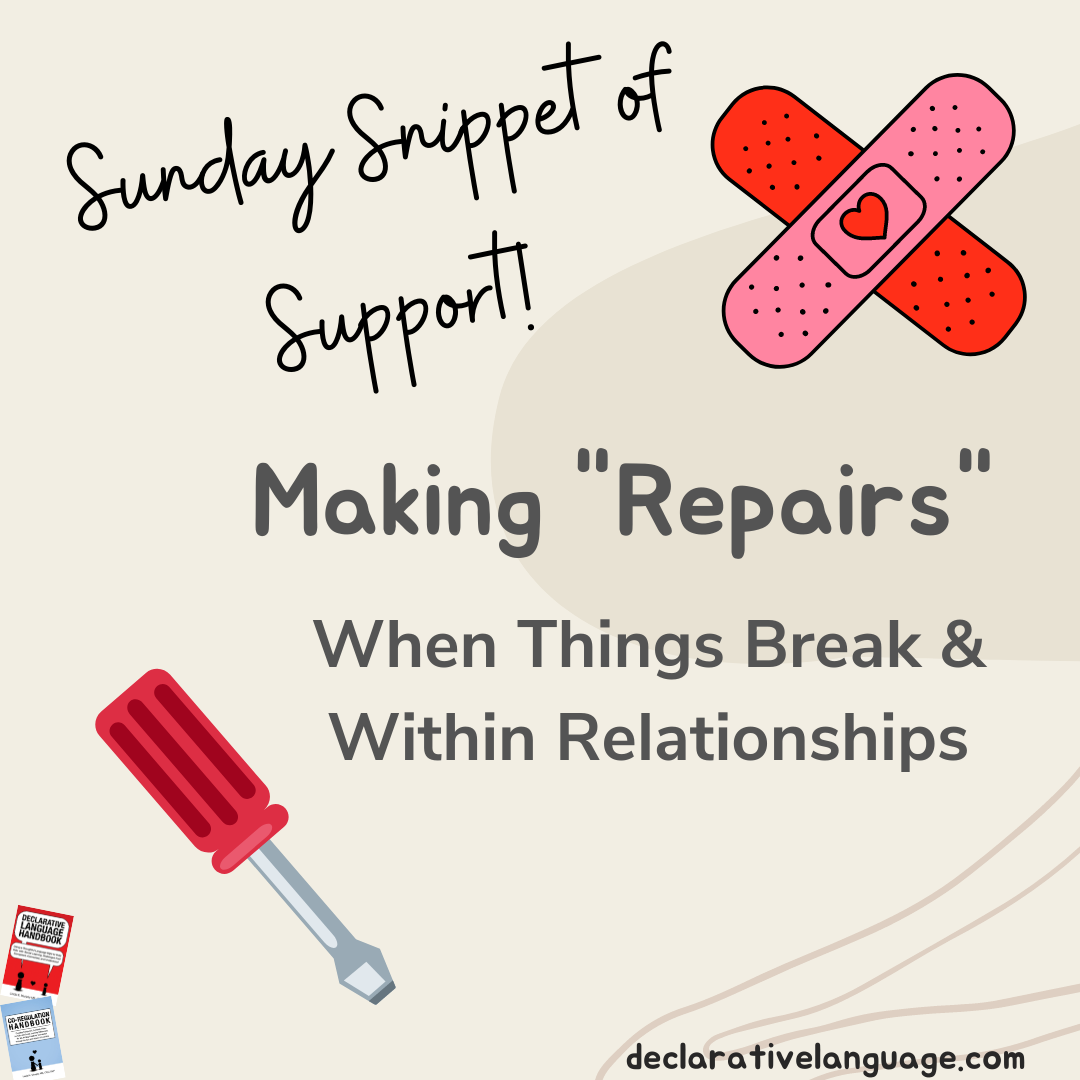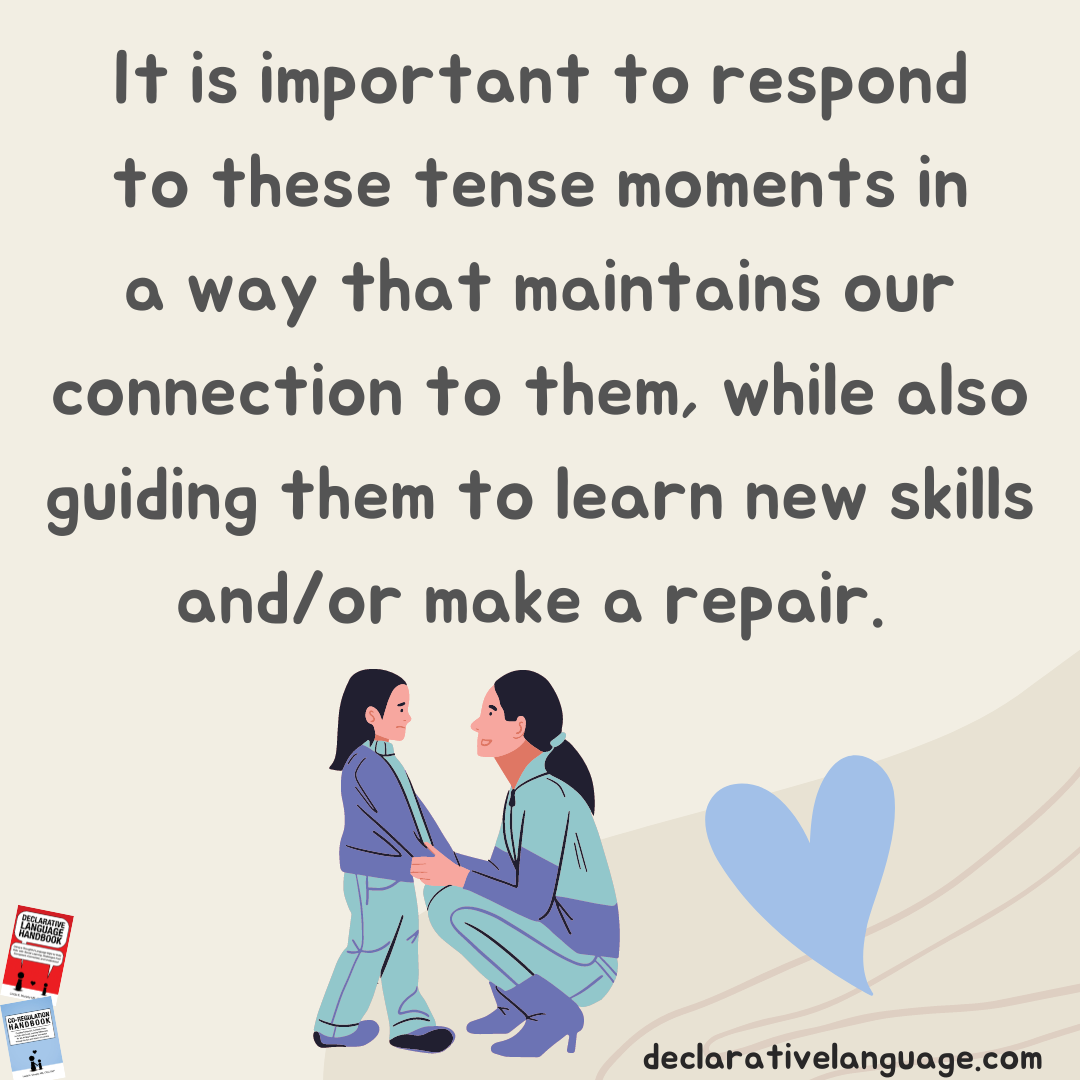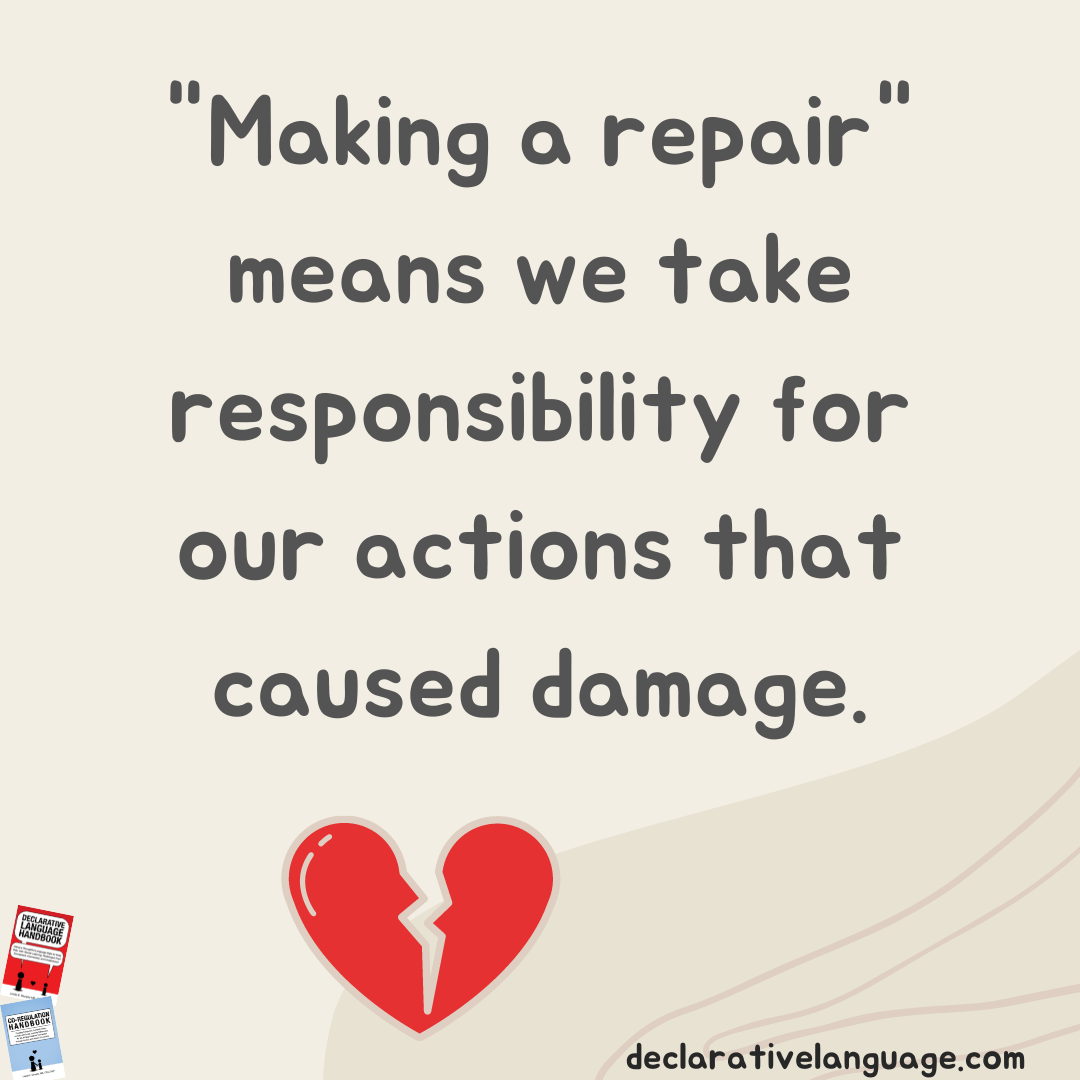Making “Repairs” - Part 1
Making “Repairs” – Part 1
I love hearing how participants in our Declarative Language Workshop are applying the concepts of Declarative Language and Co-Regulation to interactions in their daily lives. They share these personal experiences and applications with the class, and we all learn from them.
A popular topic is how to handle moments when kids are impulsive and/or dysregulated, and in some instances, get themselves into trouble.
We discuss how to respond to tense moments in a supportive, thoughtful way that maintains our connection to them, as well as how to then move forward to teach important skills and/or guide our learners to make repairs when needed.
Making a repair simply means that we take responsibility for our actions that caused damage. This may be damage to property, or it may be damage to a relationship. For example, maybe something was thrown and broken, or maybe words were said that hurt another person’s feelings.
We all make mistakes.
Being perfect is not the goal. But, when we make a mistake, an important life skill is to recognize our part in it, and take steps to fix it, or make a repair.
Repairs are usually best outside of the moment of crisis, when we all are regulated again. These are the moments our learners will be most able to take in new information, reason, perspective take, and problem solve.
These are also the moments where resilience is built.
Sometimes it is us, the grownups, who need to make the repair with our child. For example, maybe we lost control of our emotions, and yelled in a way we regret. I’ve definitely been there! In these moments, we can serve as models to our kids. This practice on our part will also help us guide them when it is their turn to make a repair. Dr. Daniel Siegel talks a lot about this important process in many of his books.
So, back to our DL Workshop participants.
One family recently shared an example of a tense moment, and how they were able to use both declarative language and co-regulation to recover from a challenging episode, and support their child to make a repair, both literally, and figuratively!
Both concepts are woven together so beautifully that I want to share it with you all, as an example of how this approach can unfold within a situation that you all may relate to.
But, because I don’t want this post to be too long, and because I want to create space for everyone to appreciate both things on their own -- the concept of repair and the beautiful example of repair to follow -- I am breaking this content up into two posts.
Next week I’ll share the example, letting the parent speak in their own words, and offer my own commentary and specific insights throughout, so you can appreciate all the important and meaningful moments, related to DL and CR, within her exchange with her child.
Stay tuned … and have a great week!
If you like my Sunday Snippets of Support, you can receive them directly to your inbox here.










